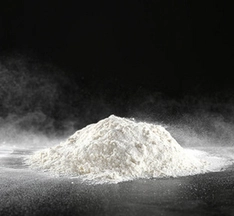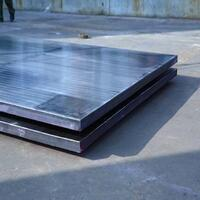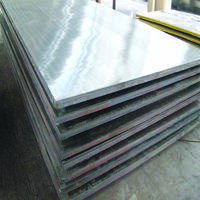1. Introduction
In the past 48 hours, architecture and design circles have buzzed about a new eco-conscious housing development in Portland that exclusively uses metal clad exteriors—specifically corten steel siding and zinc clad roofs—for their durability, low maintenance, and striking visual appeal. As more homeowners consider metal cladding for its modern look and resilience, knowing how to properly install and maintain a metal clad house has never been more important.

Whether you’re building a metal clad building from scratch or retrofitting an existing structure, this step-by-step guide covers everything from material selection to long-term upkeep. We’ll also clarify key terms like clad metal meaning and metal clad meaning so you can make informed decisions.
2. Understanding Metal Clad Materials
Before installation, it’s crucial to understand the variety of clad metals available. Metal clad doesn’t refer to a single product—it’s a category that includes steel clad, aluminum clad steel, copper siding, zinc metal siding, and even titanium clad options.
- Corten steel siding offers a rustic, weathered look and develops a protective rust layer over time.
- Zinc facade and zinc clad roof systems provide sleek, modern aesthetics with excellent corrosion resistance.
- Colorbond standing seam and PAC Clad standing seam roof panels are popular for their clean lines and color retention.
- Exterior corrugated metal siding and vertical standing seam metal siding are ideal for industrial or farmhouse styles.
Note: Terms like aluminum clad stainless steel and stainless clad aluminum refer to layered composites used in specialized applications—not typical residential siding.
3. Step-by-Step Installation Guide
3.1. Prepare the Substructure

Ensure your wall or roof framing is level, dry, and properly insulated. Use metal clad insulation or standard rigid foam behind the cladding to improve energy efficiency. For walls, install a weather-resistant barrier (WRB) like housewrap to prevent moisture intrusion behind your metal clad wall.
3.2. Choose Your Fastening System
Standing seam systems (like PAC Clad HWP or Colorbond standing seam) use concealed clips, while corrugated steel facade panels often use exposed screws with neoprene washers. For vertical applications, use PAC Clad column covers or custom trim like PAC Clad coping for clean edges.
3.3. Cut and Fit Panels
Use metal sheet cutting tools—such as aviation snips or a circular saw with a metal-cutting blade—to trim panels to size. Always wear protective gear. When cutting aluminum clad sheet or stainless steel plate, deburr edges to prevent injury and ensure tight seams.
3.4. Install From Bottom to Top
Start at the lowest point of your wall or roof and work upward. Overlap panels according to manufacturer specs—typically 1–2 inches for corrugated profiles. For a zinc clad dormer or complex roofline, pre-fabricate custom bends if needed.

3.5. Seal and Finish
Apply sealant at joints, penetrations, and transitions. Use compatible trims for corners and edges. If using corten steel siding, allow 6–12 months for the patina to stabilize before assessing final appearance.
4. Common Problems and Solutions
4.1. Condensation and Moisture Buildup
Solution: Always pair your metal clad house with proper vapor barriers and ventilation. Metal clad insulation with a thermal break can prevent interior condensation.
4.2. Oil Canning (Waviness in Panels)
Solution: This cosmetic issue arises from improper fastening or panel stress. Use stiffener ribs or choose textured finishes like aluminum diamond tread plate to minimize visibility.
4.3. Corrosion at Cut Edges
Solution: For zinc coated or aluminum clad steel, apply touch-up paint or sealant to exposed edges. Avoid dissimilar metal contact (e.g., copper near aluminum) to prevent galvanic corrosion.
4.4. Noise During Rain (for Metal Clad Roof)
Solution: Install adequate underlayment and insulation. A well-insulated attic or roof cavity dramatically reduces rain noise on a metal clad roof.
5. Maintenance Tips for Longevity
Inspect your metal facade annually for loose fasteners, damaged seals, or scratches. Clean with mild soap and water—avoid abrasive cleaners that can damage coatings on aluminum clad sheet or stainless steel metal plate.
For corten siding cost concerns: while initial investment is higher, maintenance is minimal. No painting or sealing is needed once the patina forms.
If you notice rust on non-corten steel plate (like mild steel plate or 1/4 steel plate), sand and repaint promptly to prevent spread.
6. Conclusion
Installing a metal clad house is a smart investment in durability, style, and sustainability. By selecting the right clad metals—from corten steel plate to zinc clad roof systems—and following proper installation and maintenance practices, your home will stand out for decades. Whether you’re drawn to the industrial charm of a corrugated steel facade or the refined elegance of a standing seam facade, this guide ensures your project succeeds from foundation to finish.
Our Website founded on October 17, 2012, is a high-tech enterprise committed to the research and development, production, processing, sales and technical services of ceramic relative materials such as How. Our products includes but not limited to Boron Carbide Ceramic Products, Boron Nitride Ceramic Products, Silicon Carbide Ceramic Products, Silicon Nitride Ceramic Products, Zirconium Dioxide Ceramic Products, etc. If you are interested, please feel free to contact us.
